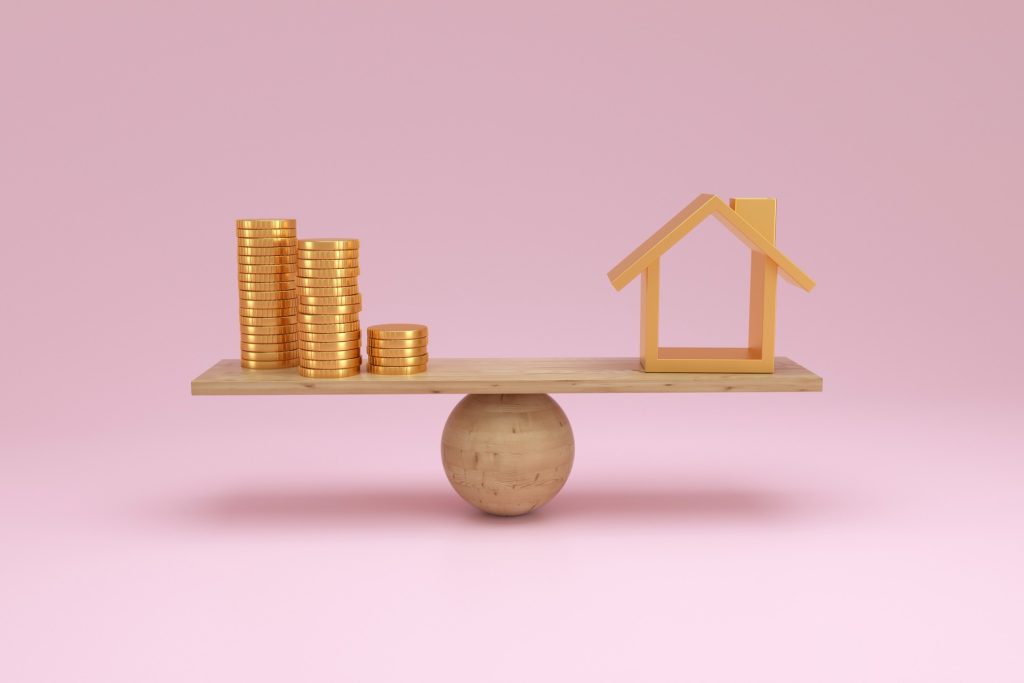
When it comes to property investment in Sydney, there are many factors that must be considered, one of them being cash flow and capital growth.
However, navigating the choices between cash flow and capital growth in property investment in Sydney can often feel like stepping into a labyrinth of conflicting advice. The perpetual tug of war between those advocating for the steady rhythm of cash flow and those cheering for the big scores of capital growth can leave investors feeling bewildered.
So, how do you know which option is right for your investment goals?
In the current real estate landscape, the intersection of higher interest rates and escalating home values has presented challenges for investors seeking properties that can entirely self-fund. Despite this, encouraging data from CoreLogic reveals that rentals generating sufficient income to cover interest repayments are still available in over 80 suburbs across the nation.
As we delve into the complexities of capital growth and cash flow properties in the Australian real estate market, understanding such trends becomes pivotal for making informed investment decisions. Moreover, finding the right balance between these two investment strategies is crucial, and the abundance of information can make it seem like an overwhelming task.
In this blog, we aim to demystify the complexities and present a clear understanding of the dynamics between cash flow and capital growth, highlighting the value property investment services, like those available through Cashflow Properties, can deliver.
Understanding the Dynamics Of Capital Growth v/s Cash Flow Properties

Investing in real estate is a proven strategy for wealth creation, and in the dynamic landscape of the Australian market, the choice between capital growth and cash flow properties is a pivotal decision for investors. Like the engine and oil in a car, capital growth and cash flow play distinct yet interrelated roles in building a robust and resilient property portfolio.
Let’s examine the pros and cons of capital growth and cash flow properties to ensure you make the right choice for your investment goals and portfolio.
Capital Growth Properties

Capital growth properties refer to real estate investments that increase in value over time. Investors buy these properties expecting their market value to rise, generating profits through appreciation. This growth can result from various factors, including market demand, location development and improvements to the property itself.
❖ The Pros
● Wealth Creation
Any property investor knows the ultimate goal of investing in real estate is wealth creation, and capital growth properties are the primary drivers of this objective. Investment properties in Sydney have the potential to appreciate significantly in value over time, allowing investors to accumulate equity and build substantial wealth.
● Leveraging Opportunities
As the value of capital growth properties increases, investors can leverage their equity to finance additional investments. This can amplify returns and accelerate portfolio growth, creating a compounding effect on wealth accumulation.
● Long-Term Perspective
Capital growth properties often require a long-term investment horizon. However, this aligns with the buy-and-hold strategy, allowing investors to ride out market fluctuations and benefit from the overall upward trajectory of property values. So long as you have the patience that comes with property investment in Sydney, capital growth properties can deliver the results you want.
❖ The Cons
● Market Volatility
Capital growth properties are susceptible to market volatility. Economic downturns or changes in market conditions can lead to fluctuations in property values, requiring investors to adopt a patient and resilient mindset. This also means investors must be willing to keep an eye on the market at all times to ensure they remain active and prepared to take action in response to these fluctuations.
● Limited Income Generation
Property investment in Sydney is one that is ever-evolving. But while capital growth properties hold the promise of substantial wealth creation, they may not provide immediate cash returns. Investors relying solely on capital growth may face liquidity challenges, especially if they need regular income.
Cashflow Properties
Cashflow properties are real estate investments that generate regular income from tenants’ rent. Investors purchase these properties to earn a steady, ongoing return through rental income, ideally exceeding the property’s operational and maintenance costs, including mortgage payments. The focus is on income stability rather than price appreciation.
❖ The Pros
● Steady Income Stream
Cash flow properties are prized for the ability to generate a steady income stream through rental yields. This consistent cash flow can be used to cover property expenses, service debt, and provide a reliable source of passive income for investors. Professional property investment services can help investors further amplify their efforts to maximise these returns.
● Risk Mitigation
Over the last few years, as a nation, we’ve seen how quickly things can take a turn for the worse, economically speaking. During periods of rising interest rates or economic uncertainty, cash flow properties act as a hedge against financial challenges. The regular income from these properties can help investors navigate through tough times without compromising their financial stability.
● Flexibility and Liquidity
Unlike the stock market or other popular investment areas, cashflow properties offer liquidity and flexibility, providing investors with immediate returns. This can be particularly appealing for those seeking to supplement their income or actively manage their investments.
❖ The Cons
● Lower Capital Appreciation
While cashflow properties offer steady income, their potential for capital appreciation may be lower compared to capital growth properties. Investors focused solely on cash flow may miss out on the long-term wealth-building potential of capital growth and have to consider other areas for wealth-building.
● Market Sensitivity
Cashflow properties are not immune to market conditions. Economic downturns can impact rental demand and yields, affecting the expected cash flow. Investors must carefully choose locations and property types to mitigate this risk. The experienced team at Cashflow Properties can source the most lucrative suburbs within your budget and investment preferences.
Balancing Act: Capital Growth and Cashflow in Harmony
1. Starting with Growth
The analogy of the engine and oil in a car aptly describes the relationship between capital growth and cashflow properties. To set a strong foundation for a property portfolio, beginning with growth properties is akin to building a powerful engine. These properties lay the groundwork for wealth creation and create opportunities for leveraging.
Growth properties set the stage for substantial wealth accumulation through capital appreciation. As property values increase, so does the potential for equity gain, allowing investors to unlock new opportunities.
2. Adding Cashflow for Balance
Once the engine is running smoothly with growth properties, it’s time to introduce the oil – cashflow properties. These assets contribute to the overall performance of the portfolio by providing a consistent income stream, mitigating risks during economic downturns, and enhancing liquidity.
Cashflow properties deliver a reliable income stream through rental yields. This income can be used to cover property expenses, service debt, and contribute to the investor’s overall financial stability.
3. Building a Balanced Portfolio
The key to long-term success in the Australian real estate market lies in building a balanced portfolio that combines the strengths of both capital growth and cashflow properties. This approach allows investors to harness the wealth-building potential of growth while enjoying the stability and income benefits of cashflow.
A balanced portfolio, with a mix of growth and cashflow properties, is more resilient in the face of market fluctuations. It can withstand economic downturns and provide investors with a diversified income stream.
Combining growth and cashflow properties optimizes borrowing capacity. This is particularly important as it unlocks opportunities for further expansion and leveraging the portfolio for enhanced returns.
Managing a diversified portfolio may require more time and effort. Investors need to stay informed about multiple markets, property types, and economic indicators to make informed decisions.
Maximize Benefits With The Strategy That Fits Your Goals
In the journey of real estate investment, the interplay between capital growth and cashflow properties is paramount. While growth properties drive success by creating wealth through capital appreciation, cashflow properties are essential, providing steady income and mitigating risks during challenging times.
Our founder, Bharat Patel, used the same formula to build his 25+ properties portfolio, which is sustainable and generates long-term wealth and ongoing cash flow.
The ultimate goal is to strike a balance, setting a foundation with growth properties and adding cashflow assets along the way. This approach optimizes borrowing capacity, enhances overall portfolio resilience, and positions investors for long-term success in the Australian real estate market. By understanding the pros and cons of each strategy and adopting a holistic approach, investors can navigate the dynamic real estate landscape with confidence, ensuring their portfolios thrive in any market condition.

